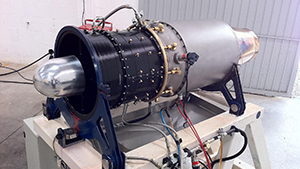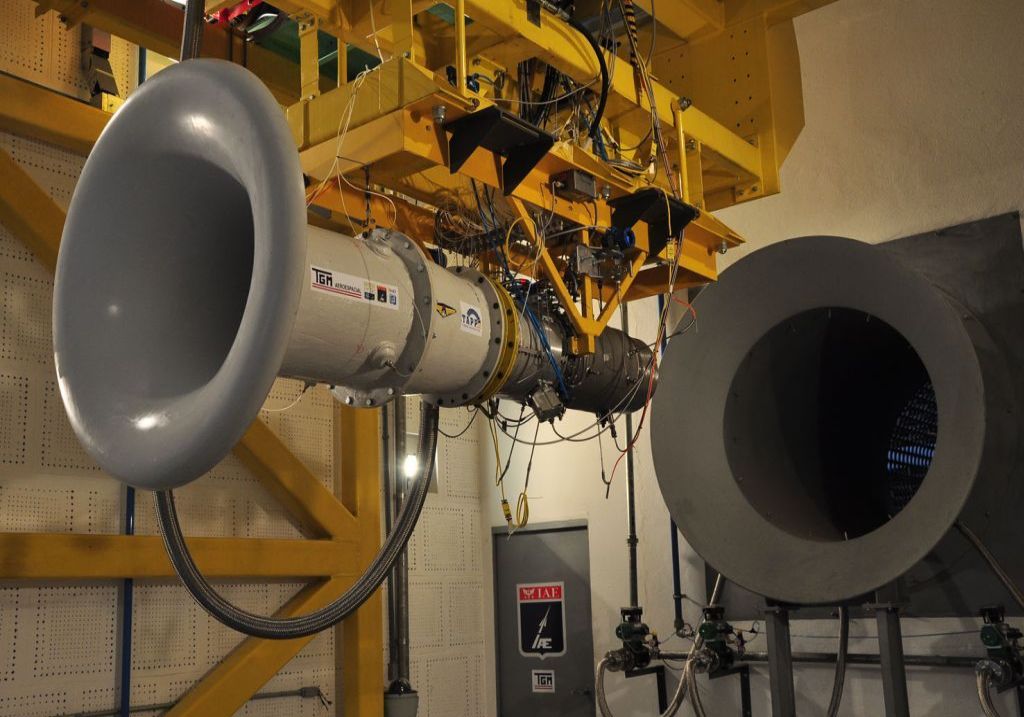MiG-29
Banned Idiot
Re: Latin American Military News & discussion
Argentina`s designed radars
[video=youtube;pGg25tsDGyQ]http://www.youtube.com/watch?v=pGg25tsDGyQ[/video]
Río de Janeiro— Embraer, the airplanes assembler, closed a deal with the French Group Zodiac Aerospace to create a joint-venture in Mexico that will manufacture components for Embraer 170/190 cabins, the Brazilian company informed yesterday.
The companies would not disclose the amount of the investment or the location of the new facilities, but Embraer confirmed that this will be their first plant in Mexico.
Artur Coutinho, Chief Operations Officer for Embraer, said that the plant in Mexico will manufacture interiors for their family of E-jets and for the airplanes of tomorrow.
“I am very pleased with this new step in the successful long-term cooperation between Zodiac Aerospace and Embraer”, Maurice Pinault, Deputy Executive Director for Zodiac Aerospace, said
Chihuahua, Chihuahua— Executive officers from Fokker Aerostructures and Chihuahua authorities inaugurated yesterday their first production plant in Mexico, where they will manufacture wings for corporate jets. During the event, Governor Cesar Duarte spoke about the growth in jobs generation and forecasted March should close with 14,000 new jobs.
Fokker’s plant in Chihuahua has a 6,660 square meters (71,687 sq. ft.) production surface, where tails for Gulfstream G550, Gulfstream G650 and Dassault SMS jets will be manufactured, as well as tails for NH90 corporate helicopters.
In his speech, Governor Duarte said he was very pleased with the Company’s initial US$15 million investment, to employ 90 people in the first stage, with growth plans to reach US$35 million in investment and 400 new jobs by the end of 2015
Brazilian jet engine TR3500
[video=youtube;4Q8udRCgY_I]http://www.youtube.com/watch?v=4Q8udRCgY_I[/video]
OURCE: Journal of Bauru
(Site Engineering Institute)
Turbine to produce a 100% local to equip unmanned aircraft in monitoring actions. This is the goal of a group of aviation experts, physics and aeronautical engineering in 2008, developed the TR 3500 - first turbine fully developed in Brazil. The equipment has been tested successfully including alternative fuels. In addition to the kerosene used in aviation turbine national work with alcohol. The lieutenant-colonel in the Air Force Domingues Francisco Antonio Correa, Bauru and son of Professor Muricy Domingues, was responsible for the operation of the turbine.
The prototype took nine months to produce. It was developed by the Aeronautics Technological Institute (ITA) in partnership with Polaris engineering technology. Included in the group, the general coordinator and professor of ITA, Santiago Maciel and Homer, by the company, the aeronautical engineer Carlos Alberto Pereira Filho, the aeronautical engineer infrastructure Milton Sanchez, the Medici Mairun mechatronics engineer, electrical engineer Antonio Neto Hadad , and Dominguez, who gives technical advice to the company.
"It all started when Alberto was doing his doctorate at the ITA. He went to the area of plasma and a teacher asked if he was interested in the area of small turbines, "says Lieutenant Colonel. At the time he was working at the Air Force in the maintenance sector of jet engines and was approached by the group as needed to balance the turbine. It was then that baurense, who now lives in Sao Jose dos Campos, was involved in the project.
After getting investment of $ 1.8 million from the federal government, through the Financier of Studies and Projects (FINEP), linked to the Ministry of Science and Technology, the group launched the challenge to build a national jet engine, from from scratch. Nine months later, after a real pregnancy, the first equipment was ready.
The proposal was to make a 100% national turbine. For this, the necessary parts were designed and machined by Polaris by Brazilian companies or by the ITA. Only one component was not done in a rolling country imported was used in the prototype. However, the expectation is that it will soon be developed in Brazil. According to Dominguez, the company has developed a turbine similar to the Vale do Rio Doce use in electricity generation. The engineer explained that the mining industry will request that the supplier is required to manufacture the bearing.
Imprint
The turbine uses kerosene as aviation fuel, but was also driven with alcohol and natural gas and generates 3,500 Newtons (N) of thrust. It has centrifugal compressor, combustion chamber of the annular flow type direct and axial turbine.
The TR 3500 is 1.30 meters long by 54 cm in diameter. The initial purpose is to serve the aviation turbine unmanned high performance, focused on specific military and civilian missions such as reconnaissance and surveillance. The engine is capable of moving an aircraft with up to 1.2 ton range from 1,000 to 1,500 miles. PRIMEIRO MOTOR TURBOJATO BRASILEIRO É APRESENTADO NA LAAD PELA POLARIS, UMA PEQUENA EMPRESA BRASILEIRA
-
Segundo reportagem da Flightglobal publicada na quarta-feira, 10 de abril, a Polaris apresentou na LAAD 2013 o primeiro motor turbojato projetado e fabricado no Brasil, e que deverá começar a preencher uma lacuna crítica na base industrial aeroespacial brasileira. O motor TJ1000 é da classe de 1.000 libras de empuxo (4.45kN) e tem peso de 70 quilos (154 libras).
Nos próximos três a quatro meses, a Polaris espera iniciar os testes de voo do motor no míssil de cruzeiro Avibras AVMT-300 Matador, segundo seu diretor Malrum Medici. A Polaris foi fundada em São José dos Campos em 1999, por engenheiros que trabalhavam na Embraer.
FIRST BRAZILIAN turbojet engine IS PRESENTED BY AT LAAD POLARIS, A SMALL BRAZILIAN COMPANY
-
According to a report published in the Flightglobal Wednesday, April 10, Polaris presented at LAAD 2013 the first turbojet engine designed and manufactured in Brazil, and it should begin to fill a critical gap in the Brazilian aerospace industrial base. The engine is TJ1000 class 1,000 pounds of thrust (4.45kN) and has a weight of 70 kilos (154 pounds) ..
In the next three to four months, Polaris expects to begin flight testing the engine in cruise missile Avibras AVMT-300 Matador, according to its director Malrum Medici. The Polaris was founded in São José dos Campos in 1999 by engineers working at Embraer.
Argentina`s designed radars
[video=youtube;pGg25tsDGyQ]http://www.youtube.com/watch?v=pGg25tsDGyQ[/video]
Río de Janeiro— Embraer, the airplanes assembler, closed a deal with the French Group Zodiac Aerospace to create a joint-venture in Mexico that will manufacture components for Embraer 170/190 cabins, the Brazilian company informed yesterday.
The companies would not disclose the amount of the investment or the location of the new facilities, but Embraer confirmed that this will be their first plant in Mexico.
Artur Coutinho, Chief Operations Officer for Embraer, said that the plant in Mexico will manufacture interiors for their family of E-jets and for the airplanes of tomorrow.
“I am very pleased with this new step in the successful long-term cooperation between Zodiac Aerospace and Embraer”, Maurice Pinault, Deputy Executive Director for Zodiac Aerospace, said
Chihuahua, Chihuahua— Executive officers from Fokker Aerostructures and Chihuahua authorities inaugurated yesterday their first production plant in Mexico, where they will manufacture wings for corporate jets. During the event, Governor Cesar Duarte spoke about the growth in jobs generation and forecasted March should close with 14,000 new jobs.
Fokker’s plant in Chihuahua has a 6,660 square meters (71,687 sq. ft.) production surface, where tails for Gulfstream G550, Gulfstream G650 and Dassault SMS jets will be manufactured, as well as tails for NH90 corporate helicopters.
In his speech, Governor Duarte said he was very pleased with the Company’s initial US$15 million investment, to employ 90 people in the first stage, with growth plans to reach US$35 million in investment and 400 new jobs by the end of 2015
Brazilian jet engine TR3500
[video=youtube;4Q8udRCgY_I]http://www.youtube.com/watch?v=4Q8udRCgY_I[/video]
OURCE: Journal of Bauru
(Site Engineering Institute)
Turbine to produce a 100% local to equip unmanned aircraft in monitoring actions. This is the goal of a group of aviation experts, physics and aeronautical engineering in 2008, developed the TR 3500 - first turbine fully developed in Brazil. The equipment has been tested successfully including alternative fuels. In addition to the kerosene used in aviation turbine national work with alcohol. The lieutenant-colonel in the Air Force Domingues Francisco Antonio Correa, Bauru and son of Professor Muricy Domingues, was responsible for the operation of the turbine.
The prototype took nine months to produce. It was developed by the Aeronautics Technological Institute (ITA) in partnership with Polaris engineering technology. Included in the group, the general coordinator and professor of ITA, Santiago Maciel and Homer, by the company, the aeronautical engineer Carlos Alberto Pereira Filho, the aeronautical engineer infrastructure Milton Sanchez, the Medici Mairun mechatronics engineer, electrical engineer Antonio Neto Hadad , and Dominguez, who gives technical advice to the company.
"It all started when Alberto was doing his doctorate at the ITA. He went to the area of plasma and a teacher asked if he was interested in the area of small turbines, "says Lieutenant Colonel. At the time he was working at the Air Force in the maintenance sector of jet engines and was approached by the group as needed to balance the turbine. It was then that baurense, who now lives in Sao Jose dos Campos, was involved in the project.
After getting investment of $ 1.8 million from the federal government, through the Financier of Studies and Projects (FINEP), linked to the Ministry of Science and Technology, the group launched the challenge to build a national jet engine, from from scratch. Nine months later, after a real pregnancy, the first equipment was ready.
The proposal was to make a 100% national turbine. For this, the necessary parts were designed and machined by Polaris by Brazilian companies or by the ITA. Only one component was not done in a rolling country imported was used in the prototype. However, the expectation is that it will soon be developed in Brazil. According to Dominguez, the company has developed a turbine similar to the Vale do Rio Doce use in electricity generation. The engineer explained that the mining industry will request that the supplier is required to manufacture the bearing.
Imprint
The turbine uses kerosene as aviation fuel, but was also driven with alcohol and natural gas and generates 3,500 Newtons (N) of thrust. It has centrifugal compressor, combustion chamber of the annular flow type direct and axial turbine.
The TR 3500 is 1.30 meters long by 54 cm in diameter. The initial purpose is to serve the aviation turbine unmanned high performance, focused on specific military and civilian missions such as reconnaissance and surveillance. The engine is capable of moving an aircraft with up to 1.2 ton range from 1,000 to 1,500 miles. PRIMEIRO MOTOR TURBOJATO BRASILEIRO É APRESENTADO NA LAAD PELA POLARIS, UMA PEQUENA EMPRESA BRASILEIRA
-
Segundo reportagem da Flightglobal publicada na quarta-feira, 10 de abril, a Polaris apresentou na LAAD 2013 o primeiro motor turbojato projetado e fabricado no Brasil, e que deverá começar a preencher uma lacuna crítica na base industrial aeroespacial brasileira. O motor TJ1000 é da classe de 1.000 libras de empuxo (4.45kN) e tem peso de 70 quilos (154 libras).
Nos próximos três a quatro meses, a Polaris espera iniciar os testes de voo do motor no míssil de cruzeiro Avibras AVMT-300 Matador, segundo seu diretor Malrum Medici. A Polaris foi fundada em São José dos Campos em 1999, por engenheiros que trabalhavam na Embraer.
FIRST BRAZILIAN turbojet engine IS PRESENTED BY AT LAAD POLARIS, A SMALL BRAZILIAN COMPANY
-
According to a report published in the Flightglobal Wednesday, April 10, Polaris presented at LAAD 2013 the first turbojet engine designed and manufactured in Brazil, and it should begin to fill a critical gap in the Brazilian aerospace industrial base. The engine is TJ1000 class 1,000 pounds of thrust (4.45kN) and has a weight of 70 kilos (154 pounds) ..
In the next three to four months, Polaris expects to begin flight testing the engine in cruise missile Avibras AVMT-300 Matador, according to its director Malrum Medici. The Polaris was founded in São José dos Campos in 1999 by engineers working at Embraer.
Last edited:







